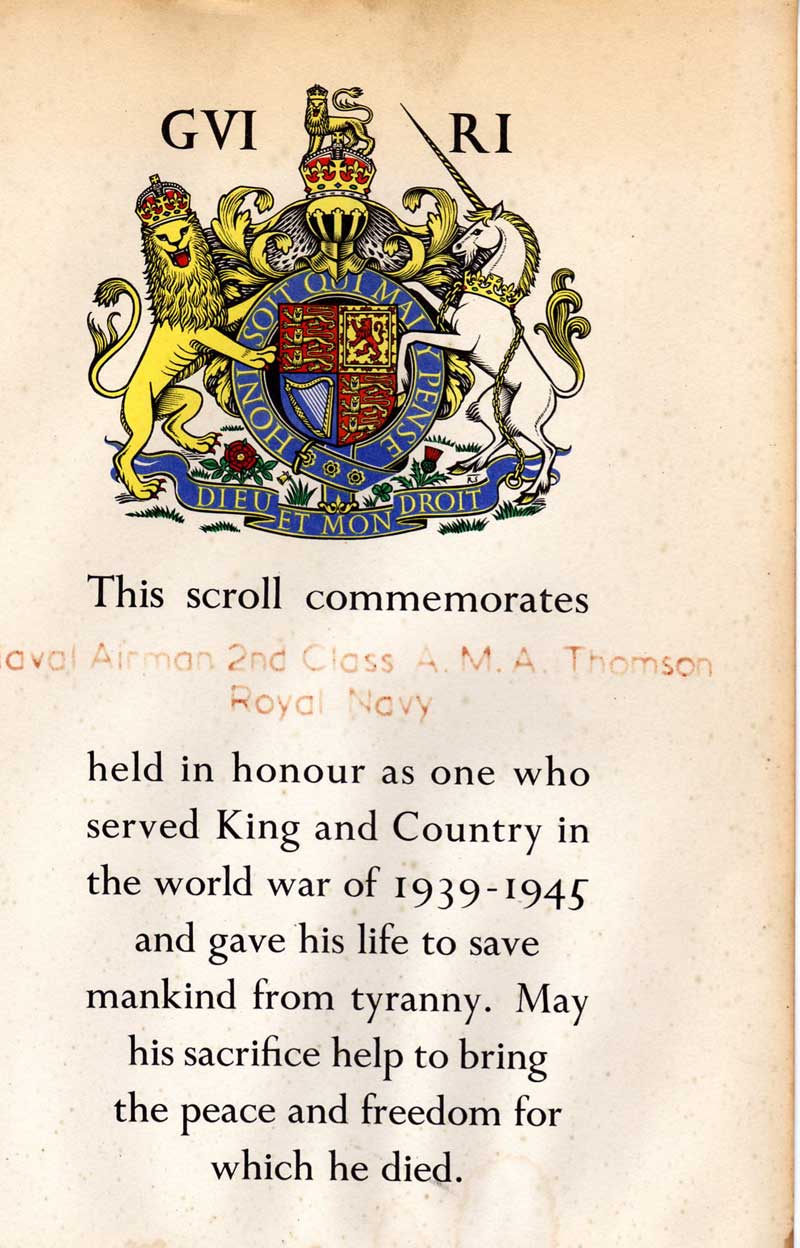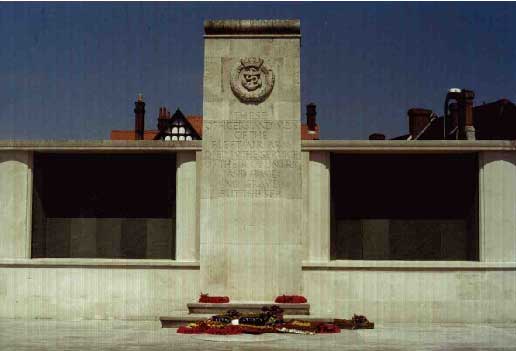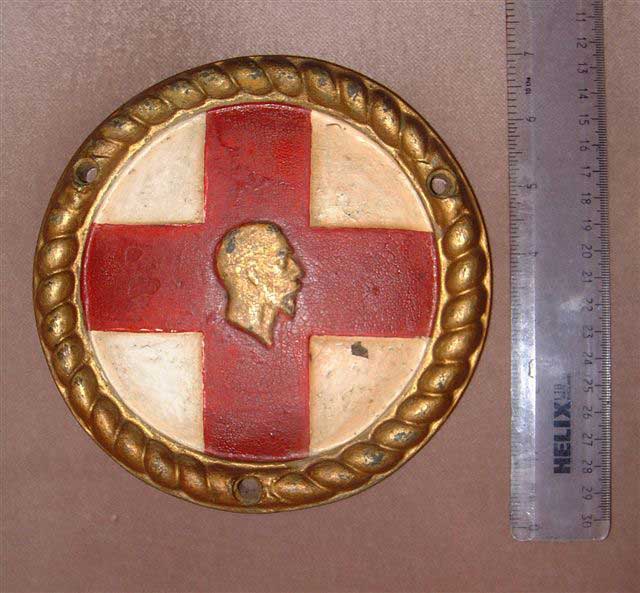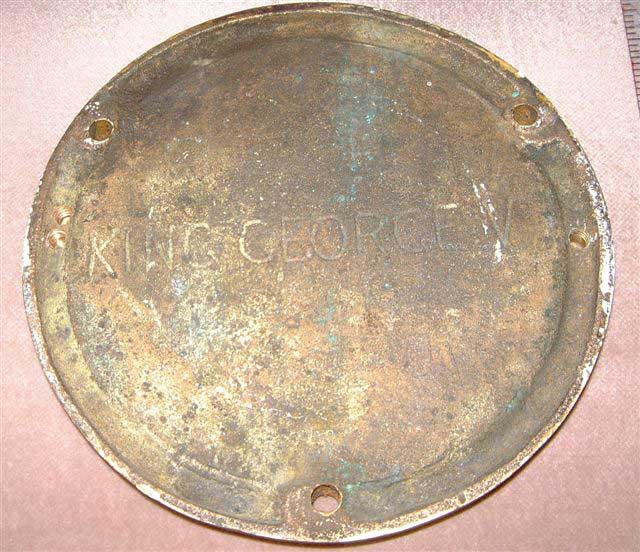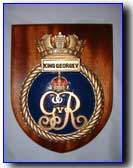|
Letters
A M A Thomson lost in HMS Dasher HMS Dasher I was interested to read your website article on HMS Dasher. "Archer Class Auxiliary Carrier, HMS Dasher Destroyed by Explosion on the 27nd. of March 1943. 379 Dead" My father heard the boat blow up in 1943 when he was in his teens, he is still alive and lives in Irvine ayrshire. The commonwealth war graves commision lists AMA Thomsons parents as living in Elie Fife at the time of their sons death. Located with the Scroll was a very heavy metal plaque which had King George V on the rear. I dont know if AMA Thomson had connections to the Battleship King George V. I can photograph the plaque if you want to see a picture of it. I thought this may interest you.
Regards
LEE-ON-SOLENT MEMORIAL:
The Memorial consists of a rectangular column of Portland stone bearing the inscription:
To each side of this central memorial stone is a wall bearing three recessed panels of Westmorland slate, on which are carved almost 2,000 names. The roll of honour lists of Fleet Air Arm personnel are carved into stone on 43 panels and they are grouped together into small alcoves or bays with 7 panels per bay. The lists are grouped by date, starting in 1939, and by rank or Branch, such as Air Artificers, WRNS, or Photographer. Mac. Hello Mac The Scroll awarded to Thomson was found in a deceased persons effects during what we call in Scotland a " House Clearance" .This is done by individuals who specialise in this kind of work and they empty houses on instructions from solicitors or family of the dead person ,they usually buy the contents of the house for a lump sum,it pays to keep in with them as I have had many good finds over the years from one such individual.
Unfortunatley no medals were found or any other paperwork relating to AMA Thomson. The person who died was related in some way to the victim from the Dasher. It may well have been his son. The house where the Scroll was found was in Anstruther in Fife just around four miles away from AMA Thomsons home town of Elie. I have no idea where the king george V comes into it The WW1 version was scrapped in 1926 the WW2 one was scrapped in 1957. Looking at the metal plaque it may be from the older boat.Your opinions would be welcome. I only have one other RN Artifact which is a medal group to HMS London I will send you a picture. regards
The first HMS King George V was a King George V-class of 1911 dreadnought, with a displacement of 23,400 tonnes and an armament of ten 13.5-inch guns in twin gun turrets and a secondary armament of sixteen 4-inch guns and had a crew complement of 870, though this increased substantially by 1916 to 1,110, and had a length of 597 feet. She took part in the Battle of Jutland, being the lead ship of the 1st Division of the 2nd Battle Squadron. King George V herself was decommissioned in 1919, used as a training ship between 1923-26 and scrapped in 1926. Builder: HM Dockyard, Portsmouth The Royal Navy of the United Kingdom assigns badges to every ship, submarine, squadron and shore establishment. Prior to the age of steam ships, ships were identified by their figurehead. With the removal of the figurehead, other means to graphically represent the ships emerged without any direction from the Admiralty. Following World War I, Charles Foulkes was appointed Admiralty Advisor on Heraldry and The Ships Badges Committee established. The Naval Crown adorns the top of all the badges. The frame is gold rope. Originally, different classes of ships had different shapes, but currently all ships and submarines have a circular design. Shore establishments have an offset square design. Ships' badges are reused along with the ship name. When the Queen approves the name of a new ship she will also approve the new ship's badge, which may have changed if the shape needs to change.
Thank you. |

